
John Donne
The imagery of God's governing an earthly domain.
1482 was the earliest translation of Euclid's Elements
Background | Information | Dates | Terms | Essay | Argument | Conclusion | Lesson
Title: Rationalizing the World |
||
|---|---|---|
 |
Nature
is the common law by which God govern's us. |
|
John Donne
|
||
The imagery of God's governing an earthly domain. 1482 was the earliest translation of Euclid's Elements |
||
Background | Information | Dates | Terms | Essay | Argument | Conclusion | Lesson |
||
![]() Do you perceive a pattern in these pictures?
Do you perceive a pattern in these pictures?
 |
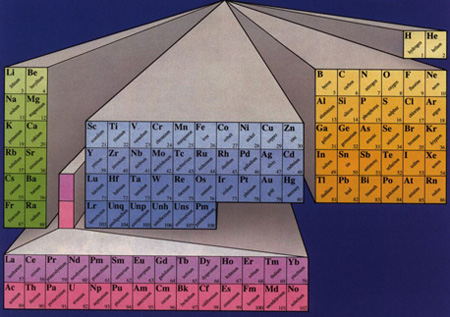 |
|||
city |
table |
country |
elements |
Cartesian graph |
• Where does the order we perceive arise from?
Background
Descartes' Discourse on Method.
"Cogito ergo sum."
Rene Descartes (1596-1650) published Discourse on Method in 1637. The original work contained a personal account of his doubts about Aristotle and sections on optics, geometry, meteorology and discussed the means by which he uses doubt to refute assumptions and thus establish a more correct means of knowing things in the world that seem to change, or even deceive us with their behavior.
static versus dynamics
Descartes argued from a set of scientific principles to allow him to discover and organize the world's complexities. Initially Descartes had planned to publish these principles in a work entitled The World, but he feared censorship when he learned of Galileo's condemnation by the Inquisition, so he suppressed the manuscript.
Instead, he wrote brief summary of the sorts of things he discusses in his intended work. He believed that was best to remain free from controversy during his lifetime so he published the work in Latin, unlike Galileo, who had written in Italian, the language of ordinary people. Descartes instead wrote for a learned audience so that he devoted his curiosity to further research rather than contending with others over heretical disputes. The three essays—on optics, meteorology, and geometry—were meant by Descartes to be examples of how his method ought to be applied.
The Cartesian coordinate system was derived from Descartes work on analytical geometry.
Fritjof Capra, The Turning Point.
"our current theories of matter . . . . The new concepts in physics have brought about a profound change in our world view; from the mechanistic conception of Descartes & Newton to a holistic and ecological view," [15]
"The exploration of the atomic and subatomic world brought them in contact with a strange and unexpected reality that seemed to defy any coherent description."
"their basic concepts, their language, and their whole way of thinking were inadequate to describe atomic phenomena." [15]
Quantum dynamics revealed "deep insights into the nature of matter and its relation to the human mind."
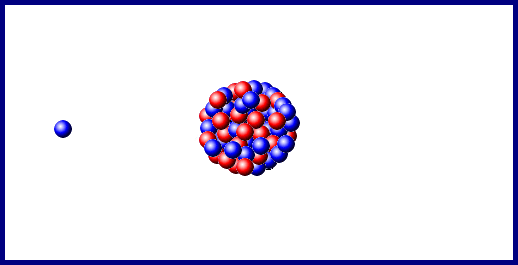
Animation of a fission reaction.
Today's crises "are all different facets of one and the same crisis, and that this crisis is essentially a crisis of perception."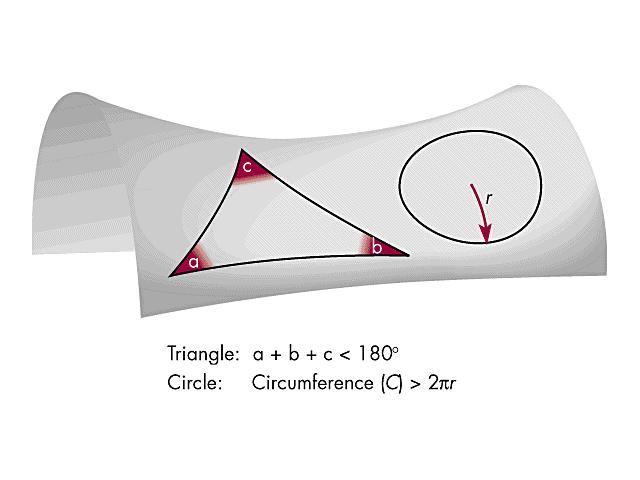
"We need a new vision of reality. We live . . . in a globally interconnected world in which biological, psychological, social and environmental phenomena are all interdependent."
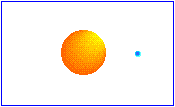

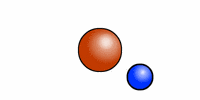
The 17th century planetary model was replaced by the 20th century quantum mechanical model of atoms
"To describe this world appropriately we need an ecological perspective which the Cartesian world view does not offer."
Fritjof Capra, The Turning Point.
Imagery & energy: ways to conceive of electromagnetic forces.
![]()
Definitions:
Bateson's rules for seeing parts and wholes.
Any cube is a three dimensional representation of a square which has but two dimensions; length and width. The cube has three dimensions, length, width, and depth or height |
||
|---|---|---|
|
||
Rational here means two thinks, 1) generally means make sense of something, as opposed to 2) a strict meaning of an orderly, analytically systematic and deliberate method for approaching how one experience or thing relates to another different episode or event.
artificial -- all that humans create expressing our feelings
pastoral -- a literary tradition, a grazing economy, flocks
edenic vision: shared Judeo-Christian-Islamic tradition
Are you discontent? Freud's assertion that civilization inherently derives from a human suppression of pleasure and makes any genuine human being discontent.
Technology: the systematic means by which human societies simplify the tasks of survival, comfort and public health
- Garden: a place for the growth of food, medicine or beauty and one origin of sedentary civilization and urban life.
- Machine: a dynamic thing used to solve problems of fabrication, manufacture, or production. (artificial)
- infrastructure: the "built environment's" support system
- Force: a physical expression of power and change
model, a schematic description that accounts for systems;
an ideal that is scaled down to an understandable dimension or size and used to display the many complex aspects of an idea, invention, or concept.motif, a thematic element in music, art, or writing;
a literary or artistic creation that is used to evoke a response or employed to repeatedly refer to a set of related emotional, rational, and sensory responses.Sleepy Hollow: "intruding- crude masculine aggressiveness vs. tender submissive feminine landscape." (p. 29)
"the symbolic power of the motif: it brings the political and the psychic dissonance associated with the onset of industrialism into a single pattern of meaning." (p. 30)sentimental vs imaginative: two ways to think about the pastoral image as a refuge and an inspiration
"mental domain of fantasy," Freud's subconscious part of the brain where wishes and magical thinking reside
Sleepy Hollow is July 27, 1844; Sleepy Hollow, Concord.
The Machine in the Garden, p. 51
natural -- natus is Latin meaning to be born, original.
Patterns that reveal a rational unity of perception.
Ancient gaming table from Persia.
called Chess.
Dates:
date person or event
BC.
347 Plato died, while completing The Laws.
334 – 323 Aristotle authored most of his writings.
335 Aristotle founded the Lyceum in Athens.
AD.
1543 Copernicus, On the revolution of heavenly Bodies.
1603 Kepler’s, Laws of Planetary Motion.
1633 Galileo's trial and censure by the Inquisition in Rome.
1637 Descartes' Discourse on Method.
1640s Thomas Hobbes, Leviathan.
1687 Newton's Principia.
1772-1789 Chemical Elements, (Lavoisier).
1833 return of the H.M.S. Beagle, with Charles Darwin.
1858 Alfred Russell Wallace's letter to Darwin, and manuscript on natural selection.
1859 On the Origin of Species, by Charles Darwin professes a unity of humans in nature.
1905 Einstein's three essays:
1928 Expanding Universe [Doppler shift] discovered by Edwin Hubble.
1942 Enrico Fermi & Leo Szilard craft a sustained fission reaction.
1953 Discovery of the DNA, double-helix, or deoxyribonucleic acid as the structural backbone of chromosomes in genetics.
![]()
Details:
Are the patterns here based on the gaming table?
Jeffersonian land system: a rational pattern on the land.
The urban landscape: a pattern of use in Denver, Colorado.
There are patterns of regularity based on sub atomic structure that create the order seen here among the 92 naturally occurring elements:
Periodic Table of the atomic elements ordered by their mass.
Data:
There are three dimensions to every division of space.
![]()
“Knowledge of the past is essential for the understanding of life in the present and in the future, not because history repeats itself – which it never does exactly – but because the past is incorporated in all manifestations of the present and will thereby condition the future…human life is the incarnation of the past.”
Rene Dubos, SO HUMAN ANIMAL, p. 61.
![]()
"God speaks in the language of mathematics."
Galileo
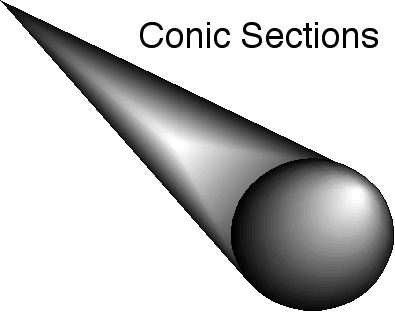
A cross section of a cone, parallel to its base, will produce a circle. But any angle sliced through a cone that is not parallel to the base will give an ellipse. The ellipse. is the shape of the orbits of planets about the sun. Kepler's intuitive grasp of this relationship between the coordinates of the observed path of Mars about the sun and the ellipse, formed when slicing a a cone at an angle to produce an ellipse, revolutionized the study of the heavens. His insight and subsequent laws of planetary motion gave mathematical precision to celestial mechanics, in the early 1600s.
Conclusion
Patterns either arise from an inherent recall of perfect knowledge we have forgotten at birth, or they are the expression of the acquired knowledge we accumulate from our sensory experience of the world, imprinted on our sub consciousness. Could patterns be more than either of these ancient views suggest? Could patterns people recognize arise from the chemistry of our cognitive processes as the body senses the world and our brains reorganize the impressions we apprehend? The mystery and wonder of the world presents itself and we must make meaning of what we sense, regardless of the patterns we impose on our experiences.
Christopher Alexander was a UC Berkeley architecture professor who insisted that good design uses a pattern language to achieve a "timeless way of building" accessible to everyman.
The core idea is the elaboration of a series of patterns inherent in the way we build any habitation--from a garden bench, to a sleeping room, to a house, to a university, town, or region. The patterns; written, concrete and specific, can be interlocked and extended--like a language--in unlimited ways. These patterns are not blueprints for construction. They are more about behavior than about decoration, more about relationships than about dimensions. Thus, the pattern, 'Sunny Window', when joined to another pattern, 'Thickened Walls' leads to just the right arrangements for a window seat-- a fitting place to sew, or read, or day-dream. When we build aright, says he, we inevitably follow these patterns, and enjoy the fullness of our humanity as we inhabit them.
Gregory Bateson was a UC Santa Cruz professor of ecological anthropology who argued that "Quantity does not determine pattern," by which he meant (in Mind and Nature, pp. 53 and 58-59) "Number is different from quantity." Here we become enmeshed in the terms number, quantity and precedent, in the sense of what comes before --at least in biology and in physics-- significantly influences what happens next, or what follows from an initial condition.
For Bateson argues that, "It is impossible...to explain any pattern by invoking a single quantity. But note that a ratio between two quantities is already a pattern." He, at least insists that "In other words, quantity and pattern are of different logical type [taxon], and do not readily fit together in the same thinking." [Ibid. p. 58] What he means is that "In other words. number is of the world of pattern, gestalt and digital computation, quantity is of the world of analogic and probabilistic computation." [Ibid. p. 54]
Quantity versus Number:
Number Quantity
Bateson's order and machinery.
Lesson
Distinguishing numbers from quantities is the first step in understanding how quantitative thinking reveals more about the world than meets the eye.
Such a use of reason is called numeracy and is just the beginning of "rationalizing" the world.
Title | Background | Information | Dates | Terms | Essay | Argument | Conclusion | Lesson